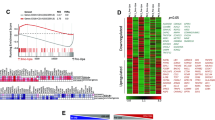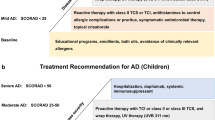Abstract
AMPK was shown to negatively regulate FcεRI activation, and FcεR-mediated Fyn activation can counteract the LKB1/AMPK axis in mast cells. However, the relationship between the major Src family kinase Lyn and AMPK remains poorly defined. Here, we investigate the molecular mechanism for AMPK inhibition by FcεRI-Lyn signaling in rat RBL-2H3 cells. We found that FcεRI activation could rapidly inhibit AMPK activation through increased AMPK phosphorylation at the inhibitory Ser485/491 residues without a change at the activating Th172 residue, and this was accompanied by a reduction of ACC phosphorylation. Using specific inhibitors and gene silencing, we found that such AMPK inhibition involved a signaling cascade through Lyn-Syk-Akt. When AMPK was activated by AICAR, A769662 and metformin, FcεRI-mediated Syk, ERK, JNK and p38 activation, and TNFα release were all inhibited. Consistently, AMPK inhibition by compound C increased FcεRI-mediated Lyn activation. Moreover, AMPK activation dominantly impaired IgE-induced recruitment of signal proteins to the FcεRI by blocking the formation of FcεRIβ-Lyn-Syk, FcεRIγ-Lyn-Syk, and AMPK-FcεRIβ complexes. In vitro kinase assay further revealed the ability of AMPKα2 to phosphorylate FcεRIβ in the complex. In vivo, AMPK activation by metformin could readily reduce vascular permeability and ear swelling in a mouse model of passive cutaneous anaphylaxis mediated by IgE. In summary, our findings demonstrate that IgE-mediated FcεRI activation results in AMPK inhibition through activation of Lyn-Syk-Akt pathway, and as such FcεRI receptor can efficiently propagate Lyn-mediated allergic signaling and response. These results provide important insights into the use of AMPK activators for the treatment of allergic diseases.
Key messages
-
AMPK is inhibited by FcεRI via Lyn-Syk-Akt signaling in RBL-2H3 cells.
-
AMPK inhibition supports FcεRI-mediated Lyn signaling and allergic response.
-
Metformin has inhibitory effect on passive cutaneous anaphylaxis.






Similar content being viewed by others
Abbreviations
- Ag:
-
Antigen
- AICAR:
-
5-Aminoimidazole-4-carboxamide-ribonucleotide
- AMPK:
-
AMP-activated protein kinase
- BMMC:
-
Bone marrow-derived mast cells
- DNP-BSA:
-
2,4-Dinitrophenylated bovine serum albumin
- FcεRI:
-
Fcepsilon receptor I
- GST:
-
Glutathione S-transferase
- HSA:
-
Human serum albumin
- IgE:
-
Immunoglobulin E
- ITAM:
-
Immunoreceptor tyrosine-based activation motif
- LAT:
-
Linker for activation of T cell
- LKB1:
-
Liver kinase B1
- MAPK:
-
Mitogen-activated protein kinase
- PCA:
-
Passive cutaneous anaphylaxis
- PLCγ:
-
Phospholipase Cγ
- PTK:
-
Protein tyrosine kinase
- SFK:
-
Src family kinase
- siRNA:
-
Small interfering RNA
- Syk:
-
Spleen tyrosine kinase
References
Stone KD, Prussin C, Metcalfe DD (2010) IgE, mast cells, basophils, and eosinophils. J Allergy Clin Immunol 125:S73–S80
Wu LC (2011) Immunoglobulin E receptor signaling and asthma. J Biol Chem 286:32891–32897
Wedemeyer J, Galli SJ (2000) Mast cells and basophils in acquired immunity. Br Med Bull 56:936–955
Akdis M, Akdis CA (2009) Therapeutic manipulation of immune tolerance in allergic disease. Nat Rev Drug Discov 8:645–660
Kinet JP (1999) The high-affinity IgE receptor (Fc epsilon RI): from physiology to pathology. Annu Rev Immunol 17:931–972
Turner H, Kinet JP (1999) Signalling through the high-affinity IgE receptor Fc epsilonRI. Nature 402:B24–B30
Wilson BS, Pfeiffer JR, Oliver JM (2000) Observing FcepsilonRI signaling from the inside of the mast cell membrane. J Cell Biol 149:1131–1142
Kawakami T, Galli SJ (2002) Regulation of mast-cell and basophil function and survival by IgE. Nat Rev Immunol 2:773–786
Sada K, Takano T, Yanagi S, Yamamura H (2001) Structure and function of Syk protein-tyrosine kinase. J Biochem 130:177–186
Ewart MA, Kennedy S (2011) AMPK and vasculoprotection. Pharmacol Ther 131:242–253
Viollet B, Horman S, Leclerc J, Lantier L, Foretz M, Billaud M, Giri S, Andreelli F (2010) AMPK inhibition in health and disease. Crit Rev Biochem Mol Biol 45:276–295
Kovacic S, Soltys CL, Barr AJ, Shiojima I, Walsh K, Dyck JR (2003) Akt activity negatively regulates phosphorylation of AMP-activated protein kinase in the heart. J Biol Chem 278:39422–39427
Horman S, Vertommen D, Heath R, Neumann D, Mouton V, Woods A, Schlattner U, Wallimann T, Carling D, Hue L et al (2006) Insulin antagonizes ischemia-induced Thr172 phosphorylation of AMP-activated protein kinase alpha-subunits in heart via hierarchical phosphorylation of Ser485/491. J Biol Chem 281:5335–5340
Berggreen C, Gormand A, Omar B, Degerman E, Goransson O (2009) Protein kinase B activity is required for the effects of insulin on lipid metabolism in adipocytes. Am J Physiol Endocrinol Metab 296:E635–E646
Ning J, Xi G, Clemmons DR (2011) Suppression of AMPK activation via S485 phosphorylation by IGF-I during hyperglycemia is mediated by AKT activation in vascular smooth muscle cells. Endocrinology 152:3143–3154
Hardie DG (2014) AMP-activated protein kinase: a key regulator of energy balance with many roles in human disease. J Intern Med 276:543–559, See comment in PubMed Commons below
Hwang SL, Li X, Lu Y, Jin Y, Jeong YT, Kim YD, Lee IK, Taketomi Y, Sato H, Cho YS et al (2013) AMP-activated protein kinase negatively regulates FcepsilonRI-mediated mast cell signaling and anaphylaxis in mice. J Allergy Clin Immunol 132:729–736, e12
Hwang SL, Lu Y, Li X, Kim YD, Cho YS, Jahng Y, Son JK, Lee YJ, Kang W, Taketomi Y et al (2014) ERK1/2 antagonize AMPK-dependent regulation of FceRI mediated mast cell activation and anaphylaxis. J Allergy Clin Immunol 134:714–721
Blake RA, Broome MA, Liu X, Wu J, Gishizky M, Sun L, Courtneidge SA (2000) SU6656, a selective src family kinase inhibitor, used to probe growth factor signaling. Mol Cell Biol 20:9018–9027
Lee JH, Mun SH, Ko NY, Kim JW, Kim DK, Kim JD, Her E, Choi WS (2007) Roles of Src-family kinase isoforms, Lyn, Fyn, Fgr, and c-Src on degranulation in RBL-2H3 mast cells. J Life Sci 17:350–355
Sanderson MP, Wex E, Kono T, Uto K, Schnapp A (2010) Syk and Lyn mediate distinct Syk phosphorylation events in FcɛRI-signal transduction: Implications for regulation of IgE-mediated degranulation. Mol Immunol 48:171–178
Kovarova M, Tolar P, Arudchandran R, Draberova L, Rivera J, Draber P (2001) Structure-function analysis of Lyn kinase association with lipid rafts and initiation of early signaling events after Fcepsilon receptor I aggregation. Mol Cell Biol 21:8318–8328
Vonakis BM, Haleem-Smith H, Benjamin P, Metzger H (2001) Interaction between the unphosphorylated receptor with high affinity for IgE and Lyn kinase. J Biol Chem 276:1041–1050
Kimura T, Kihara H, Bhattacharyya S, Sakamoto H, Appella E, Siraganian RP (1996) Downstream signaling molecules bind to different phosphorylated immunoreceptor tyrosine-based activation motif (ITAM) peptides of the high affinity IgE receptor. J Biol Chem 271:27962–27968
Simons K, Toomre D (2000) Lipid rafts and signal transduction. Nat Rev Mol Cell Biol 1:31–39
Mocsai A, Ruland J, Tybulewicz VL (2010) The SYK tyrosine kinase: a crucial player in diverse biological functions. Nat Rev Immunol 10:387–402
Liu WM, Huang P, Kar N, Burgett M, Muller-Greven G, Nowacki AS, Distelhorst CW, Lathia JD, Rich JN, Kappes JC, Gladson CL (2013) Lyn facilitates glioblastoma cell survival under conditions of nutrient deprivation by promoting autophagy. PLoS One 8:e70804
Calixto MC, Lintomen L, André DM, Leiria LO, Ferreira D, Lellis-Santos C, Anhê GF, Bordin S, Landgraf RG, Antunes E (2013) Metformin attenuates the exacerbation of the allergic eosinophilic inflammation in high fat-diet-induced obesity in mice. PLoS One 8:e76786
Stapleton D, Mitchelhill KI, Gao G, Widmer J, Michell BJ, Teh T, House CM, Fernandez CS, Cox T, Witters LA et al (1996) Mammalian AMP-activated protein kinase subfamily. J Biol Chem 271:611–614
Quentin T, Kitz J, Steinmetz M, Poppe A, Bar K, Kratzner R (2011) Different expression of the catalytic alpha subunits of the AMP activated protein kinase—an immunohistochemical study in human tissue. Histol Histopathol 26:589–596
Acknowledgments
This work was supported by a grant from the Ministry of Science and Technology (MOST 103-2320-B-002-069 -MY3).
Author information
Authors and Affiliations
Corresponding author
Ethics declarations
Conflict of interest
The authors declare that they have no competing interests.
Additional information
Kai-Chun Lin and Duen-Yi Huang contributed equally to this work.
Electronic supplementary material
Below is the link to the electronic supplementary material.
ESM 1
(PDF 264 kb)
Rights and permissions
About this article
Cite this article
Lin, KC., Huang, DY., Huang, DW. et al. Inhibition of AMPK through Lyn-Syk-Akt enhances FcεRI signal pathways for allergic response. J Mol Med 94, 183–194 (2016). https://doi.org/10.1007/s00109-015-1339-2
Received:
Revised:
Accepted:
Published:
Issue Date:
DOI: https://doi.org/10.1007/s00109-015-1339-2




